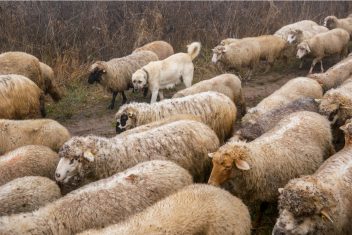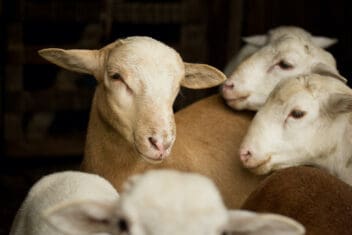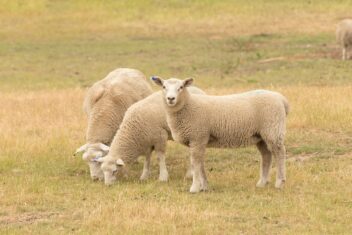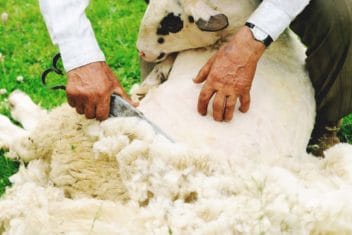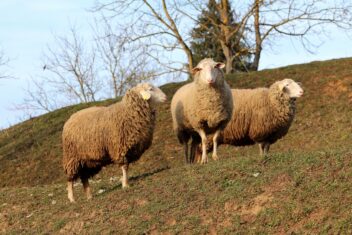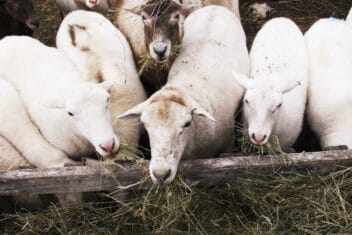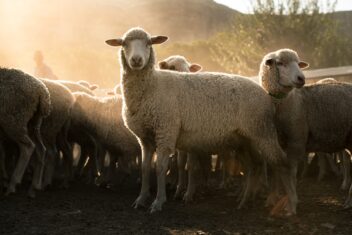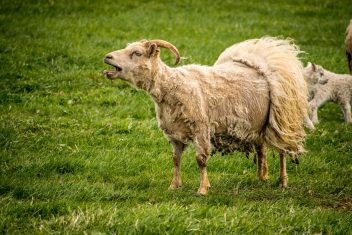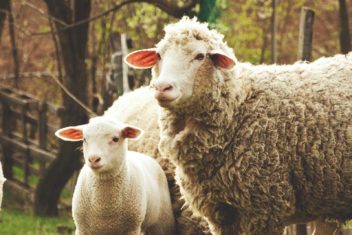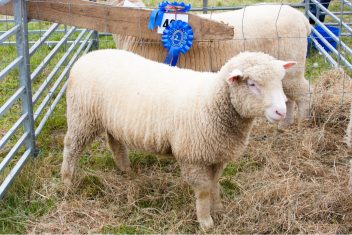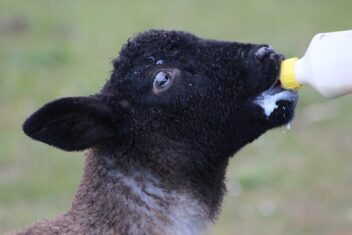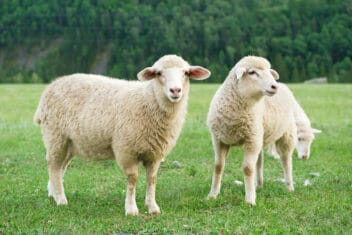In the time that I have been raising sheep, I have been very fortunate in that my ewes have fantastic maternal instincts. As soon as their lambs are born, they are with them, caring for them, attending to their every need as a good mother should. That has been true even when the mother has had a traumatic labor experience.
However, that is certainly not always the case. While some sheep breeds are naturally more maternal than others, there will inevitably be situations in which things go awry and the ewe-lamb bond does not establish itself as it naturally should.
Although this is not a good problem to have, there are fortunately several ways you can encourage a good relationship and address a bad one if it happens to occur.
Why Does the Ewe-Lamb Bond Matter?
1. Nursing Relationship
The importance of the nursing relationship is one that cannot be overlooked. A mother needs time to get to know her young. In most cases, that bond will be established immediately upon lambing, but that’s not always the case.
Establishing a good nursing relationship immediately upon birth sets the stage for successful milk production and helps unlock your ewe’s maternal instincts. Without the natural ewe-lamb bond, the lambs might not nurse successfully and your ewe could have poor milk production as a result.
2. Colostrum
Within 18 hours of birth, lambs absolutely need colostrum. Colostrum is liquid gold, providing your young lambs with all the antibodies and other protections they need to get a good head start on the world.
3. Inconvenience of Bottle Feeding
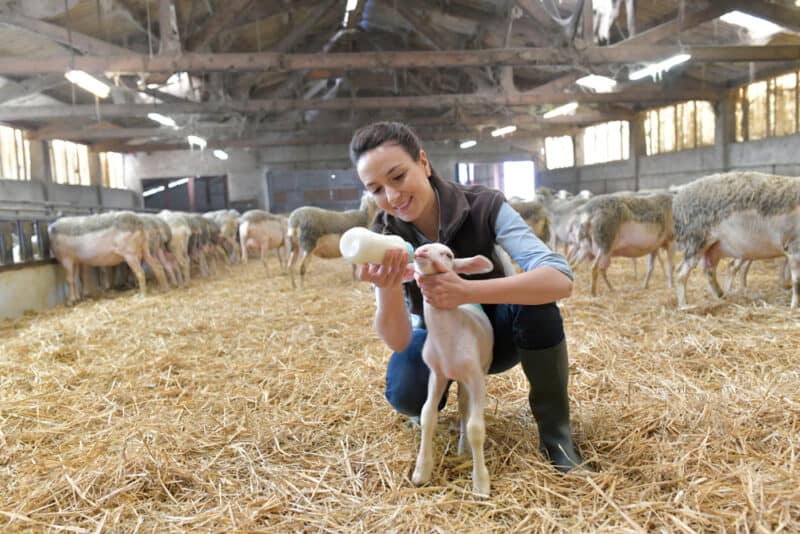
I have had to bottle feed a lamb before – not because the ewe-lamb bond failed but because the ewe had problems with her teats.
Let me tell you, as adorable as bottle-feeding sounds (and truthfully, it is quite heartwarming!) it’s not something you want to have to do. Newborn lambs are not unlike newborn babies in that they need to eat constantly.
I’ve nursed a baby and I’ve also bottle-fed a lamb. Given the choice, I would always rather nurse a baby – because I can do it from the warmth and comfort of my own home, and not in a drafty, damp barn at 2 o’clock in the morning!
If you can avoid bottle feeding, I would recommend it. The best way to do that is to encourage the natural ewe-lamb bond from the outset.
What Might Cause the Natural Ewe-Lamb Bond to Fail?
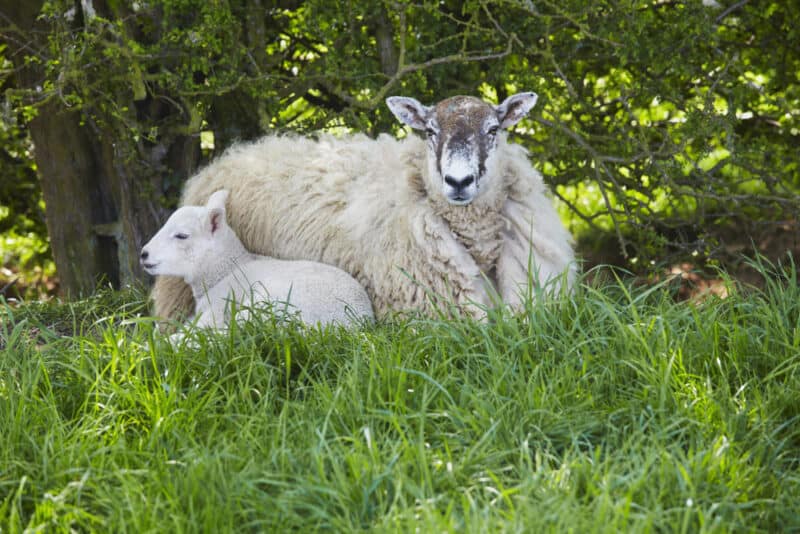
1. Disruptions During Lambing
Ewes identify their lambs by their scent, recognizing a telltale odor that is produced by the placenta and contained in amniotic fluid. You wouldn’t be able to tell the smells apart, but the odor is attractive to ewes.
Unfortunately, that odor can only be detected within the first 2 hours after birth. During this time, ewes memorize the scent of their offspring and can identify which lambs they let drink from the others. Similarly, lambs use this time to imprint on their mothers and drink colostrum.
If there are any disruptions during the lambing process, both the lamb and the ewe can become confused. This is why it’s so important not to intervene unless absolutely necessary. After lambing, it’s also important to give the ewe and lamb time to get to know each other.
Although there are some tasks you will likely need to perform as the shepherd (such as cutting the cord and dipping it in iodine and stripping the wax membrane from the mother’s teat), you should try to be minimally invasive so that the ewe-lamb bond can become established.
2. Crowded Conditions
Overcrowding is one of the most common reasons why the natural ewe-lamb bond fails. Part of this is just sheer stress. Think about it. Would you want to give birth in a room filled with hundreds of other people?
Even if your barn is not overcrowded, having too many sheep around can be confusing. There are just too many scents and distractions. Rams, in particular, are problematic. Keep your rams separate during lambing. It is not uncommon for rams to kill lambs, or to try and breed the ewe immediately after she’s lambed.
3. C-Sections
Labor and delivery are traumatic – especially if there are unforeseen emergencies during the process. A c-section is something that would definitely qualify as an emergency. A ewe who has had to go through this kind of invasive surgery may be less likely to nurse and care for her young in general.
Plus, if you’ve had to do this, there’s a good chance that you have the ewe and her lambs separated for a time, which can further confuse the nursing and parenting relationship.
4. Removal of a Lamb
Just as you should not intervene at lambing, you also should not remove a lamb unless absolutely necessary. Do not touch a lamb if it appears to be fed and cared for. If a mother appears to be attentive, let her be.
Removing a lamb can be stressful for both parties and it can make a ewe “forget” that she has a young one to care for.
5. Moving the Ewe During Lambing
This is a tip that is somewhat mixed. Most shepherds and veterinarians will tell you to never move a ewe during lambing. That’s solid advice, as a ewe who is moved can become confused and disoriented.
However, I have moved a ewe during lambing before and not had any adverse consequences. That’s not to say I recommend it. In my situation, it was necessary to move the ewe as she was attempting to lamb outdoors, surrounded by other ewes and a ram, in a freezing rainstorm.
The lamb simply would not have survived (and then we didn’t have greater odds, either). We moved her immediately after she dropped her water bag and moved the hay she had dropped it into with her in an attempt to transport that scent. Although this situation was definitely not the best-case scenario, it did end up working for us.
Try to plan accordingly so that your pregnant ewes are in their lambing jugs prior to lambing time. We were thrown off guard by her timing (we expected lambing to be much later). Do your best to anticipate these challenges, though, so you don’t have to move your ewe once she has started to lamb.
6. “Lamb-napping”
Occasionally, a ewe who has lost her lambs (whether due to miscarriage or during lambing) will try to kidnap or “lamb-nap,” as I call it, another ewe’s lambs. Usually, the natural mother will not allow this to happen. However, if any of the above conditions are present, it may occur. This can be confusing and damaging for all parties involved.
The easiest way to prevent this is to make sure your ewes are moved to lambing jugs before they lamb. They will be isolated with their babies so the natural relationship can be formed immediately following lambing.
How to Know If You Need to Intervene
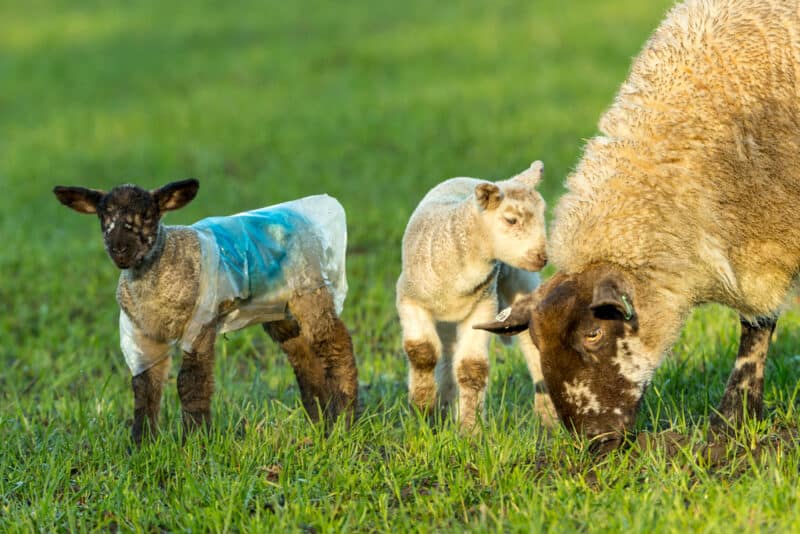
You’ll know that the natural ewe-lamb bond has failed to occur if one of several situations arises.
The first is if you see that the lamb and ewe are on opposite ends of the pen, ignoring each other, or worse – if the lamb is crying and the ewe is not responding to her. Similarly, if you see that your ewe is kicking at the lamb, attempting to get him to nurse without any results, you might have a problem.
Even more confusing is if the ewe is trying to nurse other lambs or the lamb is trying to nurse from other ewes. This situation is not common but can be fixed.
The most dangerous issue is when the ewe is headbutting the lamb in an attempt to kill it. You need to intervene immediately in this situation to either bond or graft the lamb.
Bonding vs. Grafting
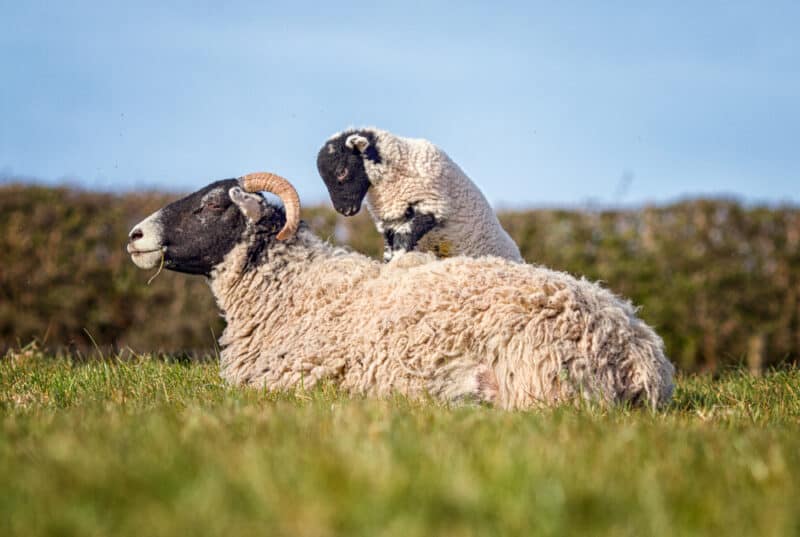
Some people use the terms bonding and grafting interchangeably, but they are not one and the same.
Bonding is the process of reuniting a lamb with a ewe, while grafting is the process of uniting and building a relationship between two unrelated sheep. If you have a ewe that is attempting to kill her lamb, grafting is often the better way to go.
Grafting, however, is incredibly challenging. Since you’re bonding a lamb to another ewe – typically a ewe that lost her lamb or perhaps gave birth to twins and only one survived – you will need to circumvent nature. In some cases, this can also be done with a lamb whose mother died rather than just one whose mother rejected her, too.
The reason why grafting is so challenging is that it requires you to manipulate the scent of the lamb so that it smells like the mother’s original lamb. Many people do this by fastening the skin of the dead lamb to the live one to “trick” the mother into accepting the other lamb.
This is not a process that I have any experience with, and fortunately, in most cases is not necessary. Bonding a ewe and lamb is much easier, and that’s what this article will focus on.
How to Bond a Ewe and a Lamb
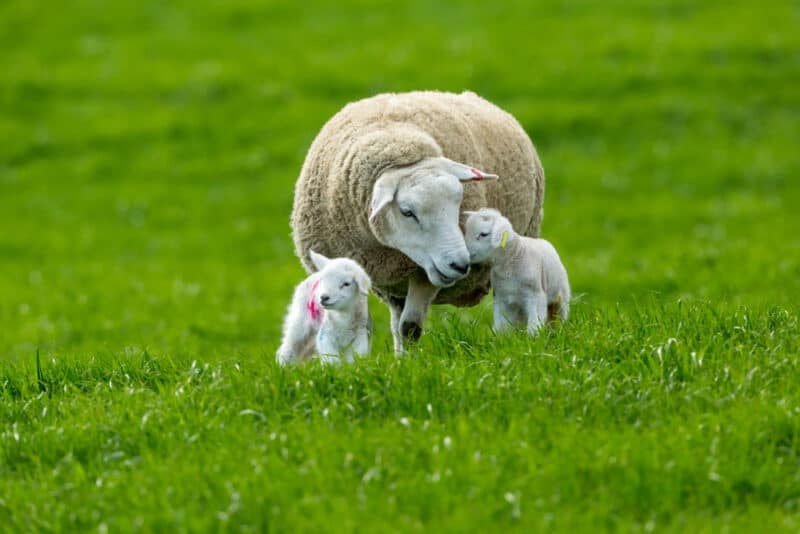
1. Encourage Natural Bonding
The best way to facilitate the ewe-lamb relationship is to encourage natural bonding. To do this, just practice behaviors that would be considered good shepherding behavior. For instance, you will have to make sure your pregnant ewes are being raised in the best possible conditions.
Make sure the barn is clean and not overcrowded and that your ewes have access to fresh water and good nutrition.
This last bit is of the utmost importance. If your ewes are hungry, even at the time of lambing, they’ll travel all over the place looking for food. A hungry ewe will drag her newborn lambs along with her, increasing the chance they will get lost or sick. Plus, milk production won’t be as strong, which can increase the likelihood of problems.
2. Build a Bonding Pen
A bonding pen, also known as a lambing jug, should be considered an essential piece of equipment when you are lambing on your farm.
It can be very challenging for a ewe and lamb to get to know each other when there are countless distractions in the way. Building a lambing jug will let them get used to each other without other sheep, in particular, getting in the way.
You can make a small-sized pen with solid sides out of hog panels, wooden panels, or woven wire, a repurposed pen out of pallets, or even use another facility like a livestock trailer, a large dog kennel, or a separate barn.
Whatever you choose to use, it should be a separate facility from where the rest of the sheep are housed. If you can, it’s ideal to get the ewe into the jug before she even starts lambing. That way, you won’t have to move her later on.
3. Halter Mom
If you still have issues with your ewe and lamb relationships even after you’ve encouraged natural bonding within a lambing jug, you may need to intervene.
Start by haltering the ewe. This halter should fit comfortably around her ears and sit high on her nose. The goal here is not to hurt her, as this will only cause more problems. Some people use a rope to halter their ewes, but I would not recommend it as it could cause the ewe to strangle herself when she gets stressed.
Halters are designed specifically for this purpose and, when fitted properly, shouldn’t cause any harm.
Tie her head up high and stay with the ewe as you keep your hand on the halter. Move the lamb or lambs toward the ewe’s teats to let them feed. You may find that you need to hold her a bit as the lambs nurse. This might seem cruel, but it’s better than allowing the ewe to mercilessly kick her lambs.
Of course, before you attempt this process, you should make sure there isn’t anything medically wrong with the ewe or lambs that is preventing the relationship from occurring. For example, if you have a ewe with engorged teats, you may need to expel a bit of milk to make nursing more comfortable for everyone.
Once you’ve introduced the lambs to the teats, let them nurse. You will need to let them drink their fill. Then you can untie the ewe and give her some hay as encouragement for her good work. Repeat this process several times until you can trust the ewe and lambs to nurse as they should. It might take a few days.
If it’s been more than 2 days and the process still doesn’t seem to be coming naturally, you may need to abandon ship and switch to bottle feeding your lambs with milk replacer. I recommend giving the process around 3-5 days to make sure it hasn’t taken before you give up.
4. Hobble Lambs: A Last Resort
Sometimes, a ewe will recognize one of her babies but not both (in the case of twins). If that’s the case, very rarely, you may have to hobble lambs. This is not common, but it can help you get by in a pinch. It works by teaching the ewe that both of the babies are hers and it also helps clear up any confusion that the “isolated” lamb might have, too.
This trick involves hobbling 2 lambs together by the front legs. You’ll use a piece of cord that is roughly 1½-foot in length. Attach the cord just above the ankle on each lamb and use a square knot so it doesn’t come loose. Both lambs will likely fight the cord at first but as long as the lambs are about the same size, it should not cause any injury.
Keep the lambs hobbled for 24 hours but no longer than 48 hours. They will be joined together as siblings and this can make the bonding process easier for the ewe, too.
Be Patient
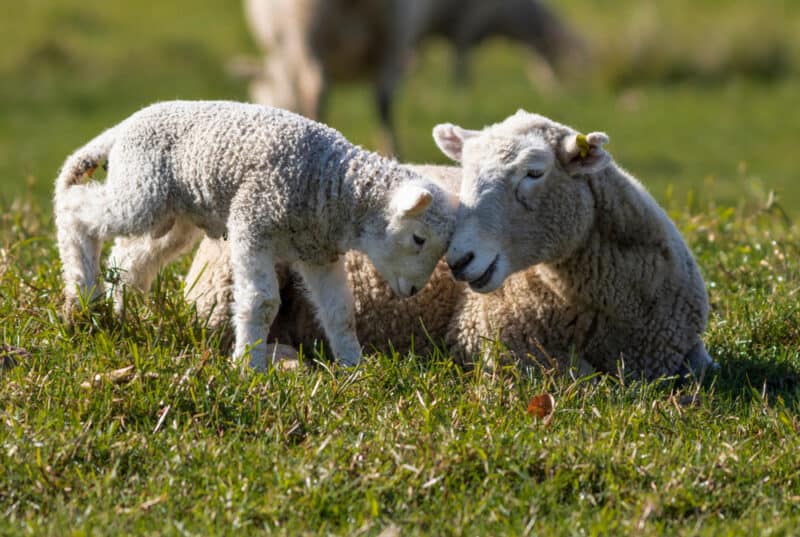
The absolute best tip when encouraging the lamb-ewe bonding process is just to be patient. 9 times out of 10, the relationship will develop on its own (even if it takes a few minutes). You would be surprised at the stressors ewes can get through during labor and they will still recognize and care for their young.
In fact, we once had to pull a very large lamb who was not presented correctly in the birth canal. The labor was very stressful for the mother (and very prolonged). We thought we were going to lose her, and in fact, for a few minutes after her lamb was born (and even resuscitated) she was unresponsive.
However, we were patient – though vigilant – and within a few minutes, the ewe was on her feet and caring for her lamb.
Stick it out, and you’ll likely find that things rectify themselves. If not, consider following some of the above tips to help smooth things out. A strong ewe-lamb relationship is vital – and it’s the key to success during lambing.

